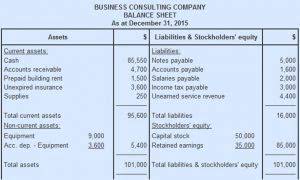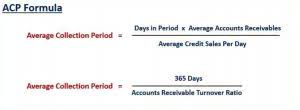
– Construction companies must also track anomalies like job costing, retention, progress billings, change orders, and customer deposits. – Construction in progress accounting is more complicated than regular business accounting. Managing CIP accounts with others or even separately requires experience and proper knowledge. Don’t miss out on the latest construction industry news and subcontractor guides. We encourage potential clients to request a demo of our fractional CFO services.
- It simplifies tracking so you can confidently manage budgets and ensure accurate, reliable financial records — all while focusing on successful project delivery.
- CIP accounting is a critical aspect of financial management for construction and asset-intensive businesses.
- Ensure your accounting staff is well-versed in GAAP standards and CIP accounting practices.
- However, the term ‘ construction under process’ is used when the company is making construction contracts.
- Mixing CIP projects with others create a hazy picture of business finances as it indicates that a company is generating expenses that are producing zero profits.
What is Construction in Progress (CIP) Accounting?
It is an accounting term used to represent all the costs incurred in building a fixed asset. Construction in progress, or most commonly known as CIP, is a fixed asset account with a natural debit balance. For professional assistance with CIP accounting or GAAP compliance, contact PVM Accounting today!
- Keep all invoices, contracts, and receipts organized for audits and financial reviews.
- Accountants do not begin tracking depreciation of construction-in-progress assets until the addition is complete and in service.
- This flexibility enables businesses to scale efficiently while receiving tailored financial strategies.
- For expert guidance on CIP accounting or construction financial management, contact PVM Accounting today!
- Through construction-in-progress accounting, also known as CIP accounting, one can keep track of all expenditures involved throughout a construction project.
Mastering Construction in Progress Accounting: A Complete Guide
Once the office complex is completed, this $320,000 will transfer to the “Building” account, where depreciation will begin according to its useful life. Revenue is typically recognized upon project completion, though some projects may use the percentage-of-completion method, aligning revenue with the project’s progress. With our expertise, your construction company can focus on completing projects while we handle the numbers. Hire an experienced accountant or CFO to manage CIP accounts and navigate complex accounting requirements. To illustrate, let’s look at an example of journal entries for a construction project. Tracking costs during construction helps businesses stay within budget and adjust as needed.

Mitigating Common Challenges in CIP Accounting
Keep all invoices, contracts, and receipts organized for audits and financial reviews. Businesses must follow specific rules regarding capitalization and expense recognition, which can vary based on jurisdiction. 2) On March 22, 2021, Business A used some of its materials valued at $2,000 to construct the expansion.
Conclusion: Master Construction-in-Progress and GAAP Compliance
By following best practices and leveraging accounting tools, businesses can ensure compliance, improve cost control, and build a solid financial foundation. Once the project is completed, transfer the total CIP balance to the appropriate fixed asset account. However, unlike other fixed assets, CIP does not undergo depreciation until the construction is complete, and the asset is put into use. A construction work-in-progress asset is any asset that is not currently usable, such as assets that are undergoing testing or that a company is building. Depending on the project’s size, construction work-in-progress accounts can be some of the largest fixed asset accounts in a business’s books. The accounting for construction in progress for such businesses is a little bit complicated.
There is no Legal E-Billing depreciation of the accumulated costs until the project is completed and the asset is placed into service. Create a construction-in-progress account under the PP&E section of your balance sheet. Financing costs range from interest payments made during the construction period to closing costs, lender fees and recording fees.

Construction Work-in-Progress is a noncurrent asset account in which the Certified Public Accountant costs of constructing long-term, fixed assets are recorded. The construction-in-progress asset account captures all costs related to the project, including labor, materials, and equipment. This data helps assess project budget adherence and ensures accurate financial reporting for audits. Once construction is complete, the asset shifts to the appropriate fixed asset account. Construction in progress accounting involves keeping a detailed record of all expenses incurred while constructing a long-term asset.


Projects spanning multiple accounting periods complicate expense tracking and reporting. Detailed documentation—receipts, invoices, records—is crucial for accuracy and audit readiness. This ensures the project’s financial history is fully captured, simplifying auditing and compliance. The IAS 11 construction contract is a comprehensive document dictating the complete accounting for construction in progress. Ensure your accounting staff is well-versed in GAAP standards and CIP accounting practices. Keeping completed projects in CIP accounts can misrepresent your financial position.
What is IAS 11 Construction Contract?

However, what is cip in accounting the inclusion of all assets, regardless of their current usability, is crucial for a balance sheet’s accuracy. This necessity becomes particularly evident when considering construction work-in-progress assets. Unlike ready-to-use assets, these are in various stages of completion, spanning from months to years, rendering them temporarily unusable during the construction phase. By tracking project costs in real-time, businesses can identify budget overruns early and adjust accordingly.


Comment (0)